#MSSL
Text
Your Lost Shadow: Chapter 1
“The Past is No More” (Part 1)
(An AU turned Fanfiction Script by stressed-bird)
The first chapter is here, finally a prologue no longer is the only content of the YLS au!!
In my script this was one chapter but it got away from me so now the reasonable course of action is to split it into two parts—
It tragically means that I have to take my current chapter names in the script and uh... kill them. But we adapt and overcome! By the way, very minimal use of Macaque’s pov this time—we have third-person semi-omnipotent narrator? We use no names until the end, because neither demon know the other’s name (or rather one does discover it and opts to not use it).
My man Macaque got kidnapped—and no good deed goes unpunished, or rather no good deed is done without an agenda.
Back to the Prologue
The demon spider looked down at the healed up shadow, he was trapped still in the cocoon but every bruise and scape had been washed away from him. All through magical means, non-invasive means—it was poor practice for a doctor to be man-handling their unwitting patients after all.
Not a finger of any of her four hands had been laid upon the simian. It left much less of an obvious magical trace—her magic’s trace. The spidery woman was wary and cautious nearly to a fault after all, taking every measure to stay hidden away from all beyond-mortal beings’ eyes. All that that attention would bring to her was trouble and interruption.
Trouble and interruption that would do nothing but hinder her work.
She rechecked her patient (captive), the most important thing for her to fix wasn’t physical inconveniences after all. That “honor” had gone to the monkey demon’s concussion, a far from unexpected result from the simian’s crash if the crater she’d “seen” him in (through the eyes of her creations) was any tell.
At least his circadian rhythm was uninterrupted by any of his injuries, she noted with brief interest, for as the dawn was nearing and beams of reflected light peeked into her dark den to symbolize the time... the shadow demon in the cocoon stirred.
She took multiple steps back, noting how her multiple spider legs only seemed to agitate her patient as their ears twitched at her movement. After a few seconds, likely motivated by the knowledge he wasn’t alone in this space, the demon opened his eyes and glared her down.
Were the shadow not trapped in the magical binds of her spiderlings’ makings, the female demon would be more intimidated. Narrowing her eyes right back, no words were spoken... no, the simian demon wouldn’t be pacified by words. But no words were needed anyways, she had no intentions to keep company.
Only the intention of fully finishing her check-up on her patient.
Lifting one of her hands, bright-magenta magic collecting at her fingertips... the demon lady brought her thumb and forefinger together to only to bring them apart and reveal a thin needle of her magic.
Grasping it, she flicked the honing needle at the dark-furred demon and landed it right between his eyes despite his avoidance attempts. The demon’s fur bristling and teeth beginning to get bared the longer the silence went on, the power imbalance of him being bound in silk and trapped further fueling his hostile glare.
Golden eyes staring at glowing magenta that saw past him.
Suddenly, a motion of her clawed finger, and thread-like magic left her finger pad. Hooking itself to the previously unseeable needle and yanked back, leaving only a small feeling of a prick.
He glared at her with pure hostility only to see... eyes that stared back, seeing him now, but full of only sorrow, pity. The demon’s pity was the last straw, and the simian snarled out a venom-filled “what.”
At the silence he received, the monkey elaborated. “What the hell are you staring and holding me captive for! What are you doing, can you even speak.”
Every word escalating in decibels and fury, it seemed like forever (a few minutes) until the spider demon deigned him worthy an answer.
“You poor creature, you hold so much pain and sorrow.”
The monkey shook in his cocoon, further feeling antagonized. “That answers none of my questions, try again.”
It became the spider’s turn to sharpen her gaze, glaring down with a mix of annoyance and that damn pity. She closed her eyes and took a breath, seemingly contemplating her next answer, ignoring the other demon’s growls and furious complaints about her enduring silence.
Still through closed eyes, she spoke again, calm and unbothered.
“It’s awful really, but don’t fret. You won’t have to deal with it... with what brings you such heartache and strife... much longer.” A louder growl was made and the monkey demon seemed ready to immediately enter verbal battle until a spiderling jumped down on his head to silence him for a moment.
“Must you really do that? What I meant isn’t that I’ll kill you, I meant that I have a solution that’ll benefit us both that’s tried and true. You’re not the first broken creature to find their way into my den, and won’t be the last.
Whether you’ve noticed or not, I am a doctor of sorts. I heal every weary traveler and soul that comes my way, I have nothing but glowing reviews of my work. So trust you’re in good hands, little shadow. The solution to your sorrow and woes and heartache is simple and I’m more than willing to impart it on you.
I’ll just take your memories! All of them. All the ones that bring you strife anyways.”
At that the silenced monkey did begin to struggle even more fiercely than when he’d first awoken, throwing the small creature silencing him off to somewhere on the cave floor and getting rid of the wad of silk the little pest put to cover his mouth. Finally, freeing his mouth and outright yelling at the demon, “Like hell you will! Try and see how good that goes for you.”
The spider staring at him, unmoved and not surprised at his outburst. She just look more annoyed with him than she was before, as she waved away his empty threat.
“Your paltry, hollow threats are... interesting, but inconsequential. Worry not, not a hand will be laid on you by me, it’s improper of me to do to my patients.
So hush now and stop your fussing. This will be painless, well... painless as I can make it anyways. Taking memories from minds isn’t exactly meant to be done nor a precise science but it’s a necessary process.
It’s just a small bit more hurt but only to free you from all of it. The hurt, the pain, the tears and heartache you hold... all of it will be purged from you. And then, you’ll get to keep living your life, but now bothered no longer by all this hurt you hold in yourself, that’s my promise.”
Macaque could nothing—the cocoon he was trapped only being reinforced and better secured to keep him still by the little creatures that skittered around the room, his hands trapped to his chest and unable to make their magic, all of his magic but his glamors dampened and kept at bay by the threads trapping him.
The time to talk gone—not that he’d been particularly interested in civilized conversation with the demon that trapped him—and he was powerless to do anything but watch.
Even more spiderlings came alive and moved as they got her spell materials in order. Multiple bringing to her a hefty crystal ball she had to hold with multiple hands—it was a lot of memories she was taking after all and the vessel for them had to be large enough hold them.
Holding up the crystal sphere, the rock clearly made from some sort of rose-colored gemstone that seemed clear as glass at its center. The orb now glowing with her magenta magic as all the eyes in the cave that weren’t Macaque’s lit up with the spider demon’s glow.
“... Now brace yourself, little shadow.”
#stressed writes#no beta we die like men#lmk au#your lost shadow au#tw spiders#lmk fic#lmk macaque#lmk oc#<- Fāngyīn is technically an oc of mine— she’s a morally grey person who has good intentions and questionable means#this is the last we’re seeing of Memory Stealing Spider Lady (MSSL) (Li Fāngyīn) for a long time...#at least until a certain someone fucks up and commits breaking and entering on her home during the climax of the story#talking in the tags
10 notes
·
View notes
Photo

Mssls - Oles by oerendhard1
20 notes
·
View notes
Text
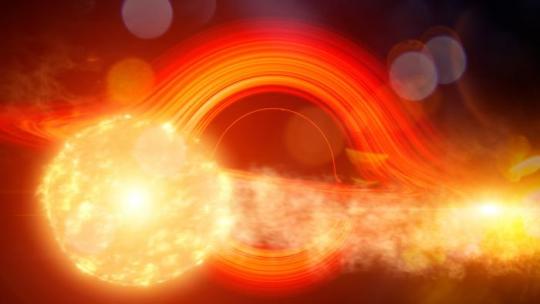
Swift learns a new trick, spots a snacking black hole
Using NASA’s Neil Gehrels Swift Observatory, which launched in 2004, scientists have discovered a black hole in a distant galaxy repeatedly nibbling on a Sun-like star. The object heralds a new era of Swift science made possible by a novel method for analyzing data from the satellite’s X-ray Telescope (XRT).
“Swift’s hardware, software, and the skills of its international team have enabled it to adapt to new areas of astrophysics over its lifetime,” said Phil Evans, an astrophysicist at the University of Leicester in the United Kingdom and longtime Swift team member. “Neil Gehrels, the mission’s namesake, oversaw and encouraged many of those transitions. Now, with this new ability, it’s doing even more cool science.”
Evans led a study about the unlucky star and its hungry black hole, collectively called Swift J023017.0+283603 (or Swift J0230 for short), which was published on Sept. 7 in Nature Astronomy.
When a star strays too close to a monster black hole, gravitational forces create intense tides that break the star apart into a stream of gas. The leading edge swings around the black hole, and the trailing edge escapes the system. These destructive episodes are called tidal disruption events. Astronomers see them as flares of multiwavelength light created when the debris collides with a disk of material already orbiting the black hole.
Recently, astronomers have been investigating variations on this phenomena, which they call partial or repeating tidal disruptions.
During these events, every time an orbiting star passes close to a black hole, the star bulges outward and sheds material, but survives. The process repeats until the star loses too much gas and finally breaks apart. The characteristics of the individual star and black hole system determine what kind of emission scientists observe, creating a wide array of behaviors to categorize.
Previous examples include an outburst that occurred every 114 days, potentially caused by a giant star orbiting a black hole with 78 million times the Sun’s mass. Another recurred every nine hours around a black hole with 400,000 times the Sun’s mass, likely caused by an orbiting stellar cinder called a white dwarf.
On June 22, 2022, the XRT captured Swift J0230 for the first time. It lit up in a galaxy around 500 million light-years away in the northern constellation Triangulum. Swift’s XRT observed nine additional outbursts from the same location roughly every few weeks.
Evans and his team propose that Swift J0230 is a repeating tidal disruption of a Sun-like star orbiting a black hole with over 200,000 times the Sun’s mass. They estimate the star loses around three Earth masses of material on each pass. This system provides a bridge between other types of suspected repeating disruptions and allowed scientists to model how interactions between different star types and black hole sizes affect what we observe.
“We searched and searched for the event brightening in the data collected by Swift’s Ultraviolet/Optical Telescope,” said Alice Breeveld, a research fellow at the University College London’s Mullard Space Science Laboratory (MSSL) who has worked on the instrument since before the satellite launched. “But there wasn’t any sign of it. The galaxy’s variability was entirely in X-rays. That helped rule out some other potential causes.”
Swift J0230’s discovery was possible thanks to a new, automated search of XRT observations, developed by Evans, called the Swift X-ray Transient Detector.
After the instrument observes a portion of the sky, the data is transmitted to the ground, and the program compares it to previous XRT snapshots of the same spot. If that portion of the X-ray sky has changed, scientists get an alert. In the case of Swift J0230, Evans and his colleagues were able to rapidly coordinate additional observations of the region.
Swift was originally designed to study gamma-ray bursts, the most powerful explosions in the cosmos. Since the satellite launched, however, scientists have recognized its ability to study a whole host of celestial objects, like tidal disruptions and comets.
“Swift J0230 was discovered only about two months after Phil launched his program,” said S. Bradley Cenko, the mission’s principal investigator at NASA’s Goddard Space Flight Center in Greenbelt, Maryland. “It bodes well for the detector’s ability to identify other transient events and for Swift’s future exploring new spaces of science.”
Goddard manages the Swift mission in collaboration with Penn State, the Los Alamos National Laboratory in New Mexico, and Northrop Grumman Space Systems in Dulles, Virginia. Other partners include Leicester, MSSL, Brera Observatory in Italy, and the Italian Space Agency.
IMAGE....In this artist's concept, a supermassive black hole pulls a stream of gas off a star that passes too close. CREDIT NASA’s Goddard Space Flight Center/Chris Smith (USRA/GESTAR)
3 notes
·
View notes
Text
Tips and Leagues for Enjoying Soccer Year-Round in Minnesota from Bradley Schnickel

Everyone of any age or skill level can enjoy playing soccer. Younger people want to play and watch the game, which has recently increased in popularity in the United States. With a 10-year, 2.5 billion dollar deal, the largest television contract Major League Soccer has ever had, AppleTV will soon start streaming all Major League Soccer (MLS) games. This will allow fans like Bradley Schnickel to watch every game on a single platform.
Due to the weather, playing soccer in Minnesota during the winter can be difficult, but Bradley has found ways to play. Coed and men's leagues are held at the Adrenaline Sports Center in Ramsey, Minnesota, from October to April. At the Twin Cities Orthopedics Performance Center in Vadnais Heights, Minnesota, he also likes to play indoor sports. At the Twin Cities Orthopedics and Performance Center, a single large field can be divided into three smaller fields, each separated from the others by netting, allowing for the simultaneous play of up to three games. Every year from November through April, Schnickel enjoys performing here.
A league that primarily competes in cities and the south metro is CSC. Spring, summer, fall, and winter leagues for coed, men's, women's, and men over 38 are available at the National Sports Center in Blaine, Minnesota. Bradley appreciates the number of teams competing in these leagues and the intensity of the competition.
The Minnesota Senior Soccer League (MSSL) competes in Blaine on Wednesday nights from April through September, a great summer option for men over 40. At the end of the season, there are twelve teams and a playoff structure. The Minnesota Senior Soccer League is the umbrella organization for competitive leagues for players over 50 and over 60. Bradley Schnickel advises men who want to play independently to contact the league and ask to be placed on a team.
6 notes
·
View notes
Text
Motherson Sumi System India Pvt Ltd Campus Placement 2022

Motherson Sumi System India Pvt Ltd ( MSSL ) was established in 1986 and is part of the motherson Group Motherson sumi system Ltd. is a join venture between Samvardhana Motherson Sumi system Ltd. ( SWS ) of Japan A Collaboration with Tokai Electric Co. ( Now SWS ) In 1983 led to the incorporation of Motherson sumi system in 1986 , Primarily was as a wiring harness Manufacturers.
0 notes
Text
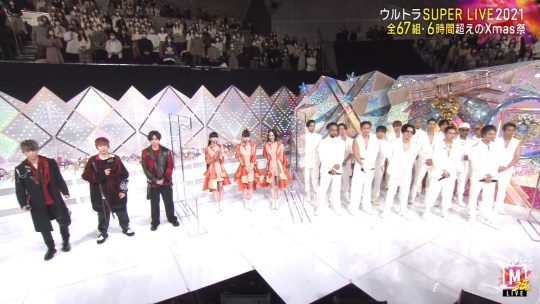









NEWS at MUSIC STATION SUPER LIVE 2021
NEWS were asked to present their "best picture of 2021" and Shige presented his tuna photo. He explained how every year he tries to catch a tuna that weighs more than his age, so currently over 34 kg and this year he caught a 43 kg one. They also said Shige sent the picture to the members personally and he admitted he had to share the happiness.
15 notes
·
View notes
Text
ऑटो कंपोनेंट्स प्रमुख मोथरसन ने अक्टूबर - ईटी ऑटो के सामान्य होने की मांग की
ऑटो कंपोनेंट्स प्रमुख मोथरसन ने अक्टूबर – ईटी ऑटो के सामान्य होने की मांग की
[ad_1]
नई दिल्ली: ऑटो घटकों प्रमुख मोथरसन सुमी सिस्टम्स लिमिटेड (MSSL) उम्मीद है कि दुर्घटना के बाद इस साल अक्टूबर से राष्ट्रव्यापी वापसी की मांग सामान्य हो जाएगी लॉकडाउन।
वीसी सहगल, का अध्यक्ष मदरसन सूमीसिस्टम्स लिमिटेड (MSSL) ने कहा कि चीन, कोरिया और जापान के बाजारों की तुलना में लॉकडाउन के कमजोर रहने के बाद भारत में मांग में कमी आई है, लेकिन सेगमेंट के ऑटोमेकरों ने परिचालन फिर से शुरू कर दिया…
View On WordPress
0 notes
Text
Auto components major Motherson expects demand to be normal by October
Auto components major Motherson expects demand to be normal by October
New Delhi: Auto components major Motherson Sumi Systems Limited (MSSL) expects demand to return to normal from October this year after the crash that followed the pandemic-triggered nationwide lockdown.
VC Sehgal, chairman of Motherson SumiSystems Limited (MSSL), said while recovery in demand in India after the lockdown has been weak compared with markets in China, Korea and Japan, automakers…
View On WordPress
0 notes
Text
Every Hells-Bending Story, World, and Itty Bitty Scrap of Concept Idea for that rinky dink little video game with the funny bone man, so there (in no particular order)
SwapLSTfell - Knout and Mutt (the only fs/sf p that has that particular Name).
BIG FAT TRIGGER WARNING.
LSTfell - Spike and Slugger.
BIG FAT TRIGGER WARNING. I mean, they know how to... do the do with each other but that’s just bros bein’ bros, no romo. Feel like that’s something important to note as a LST (like the abbreviation for Lust from the Original Underlust. For my tagging and stories, LST and lust universes are fundamentally different, in that LST connotates a much darker lust world) au
RISA: (name still under work) - a... two-person-centric story.
BIG FAT TRIGGER WARNING. No fontcest though!
Wildberries: a bitty-based story (all creatures! creature/animal-bitty story!)
You Brought This Weight (YBTW) - An anti-reverse-harem x reader story. Baker does get... something, or should I say someone(s) out of it, but by no means is every-brother-and-his-mother trying to woo her.
BIG FAT TRIGGER WARNING. But no fontcest though!
The Milkshake Surprise Lounge - a found family... really kind of sort of. Established partial ABO,
BIG FAT TRIGGER WARNING.
The Kitty Bitty Cafe Center - a bitty story. not creature/animal-bitties this time though!
(UNNAMED, Wasps in the Honeycomb? does that sound too spicyhoney to you??) - soft, fluffy, plotless aromantic polycule of four papyri - Chevalier, Tang, Thunder, and Cilantro. Not... really fontcest? Sort of selfcest? Feeling-less selfcest?
well ya shoulda - potential?? future MsSL-concurrent story where Alpha accidentally gets pulled over to a different set of “oh! we met each other” classic-four-square-aus (TFS-and-SF). Fontcest
Jacinta Set (ehh, name not quite right yet) - original female human and not having an unrealistically “gotta-catch-’em-all!” harem. i mean, she has three boyfriends, but she’s not going to date, what, 18 boys? That’s crazy talk.
Booming Bloom (name still ??) - softfell!-two-skeleton-brother-children-get-hecking-adopted-and-underfell-de-edgifies
No fontcest!
(UNNAMED) - gb!skeleton-brother-children! young soft bap-babs get adopted by a very panicked, tired, but loving Alphys.
Dustswap! (NAME FOR SANS NEEDED...? Yes, that is going to be part of the official name for this story-) - What it says on the tin, with the understanding that Undyne would survive, as I don’t remember Alphys and Grillby being killed in-game (at least, for this story Undyne has more reason that to have dust on herself).
The Timeline Smash! - something about Papyrus discovering his “Whatever” Phone-Seeing ability has evolved into other universes...? Also: featuring a Frisk-and-Flowey investigator-helpful duo! something sinister a plot against monsters... Baby Gaster...? Reality Warping/Breaking Maybe Do We Even Know??
m o r e t o b e a d d e d . . .
#bitty-kitty#undertale#underwhatever#my very own takes on aus and things#mssl-au#wildberries#dustswap#swapfell/fellswap but i really prefer to use swapfell to call mine#fluffy adoptive parents#Lust universe takes...
4 notes
·
View notes
Link
Work at Mssl Mideast(FZE) which is located in sharjah uae, company is hiring 50 male and 200 female , so interested contact to the manpower office where contact number and address are given in the post
0 notes
Photo

Mssls - Rosbe by oerendhard1
10 notes
·
View notes
Photo
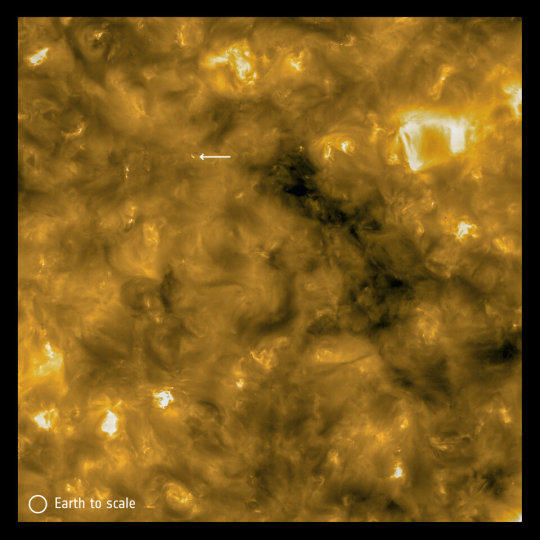
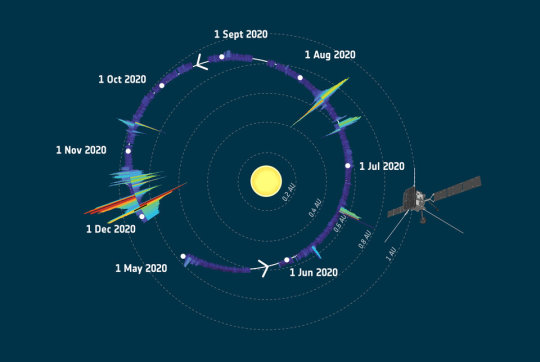
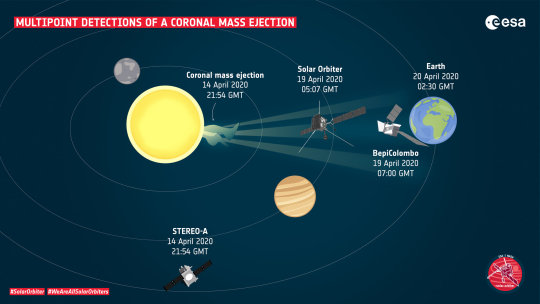
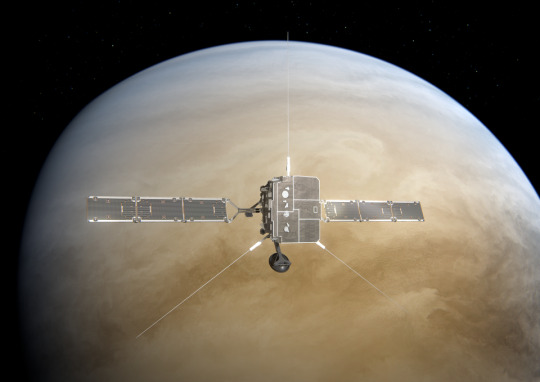
Solar Orbiter: turning pictures into physics Solar Orbiter’s latest results show that the mission is making the first direct connections between events at the solar surface and what’s happening in interplanetary space around the spacecraft. It is also giving us new insights into solar ‘campfires’, space weather and disintegrating comets. “I could not be more pleased with the performance of Solar Orbiter and the various teams that keep it and its instruments operating,” says Daniel Müller, ESA Solar Orbiter Project Scientist. “It has been a real team effort under difficult circumstances this year, and now we are beginning to see those efforts really paying off.” Solar Orbiter’s ten scientific instruments are split into two groups. There are six remote sensing telescopes, and four in-situ instruments. The remote sensing instruments look at the Sun and its extended atmosphere, the corona. The in-situ instruments measure the particles around the spacecraft, which have been released by the Sun and are known as the solar wind, along with its magnetic and electric fields. Tracing the origin of those particles and fields back to the solar surface is one of the key objectives of Solar Orbiter. During Solar Orbiter’s first close pass of the Sun, which took place on 15 June and saw the spacecraft approach to 77 million kilometres, both remote sensing and in-situ instruments were recording data. Footprints of the solar wind Solar Orbiter data have made it possible to calculate the source region of the solar wind that hits the spacecraft, and identify this ‘footprint’ in the remote sensing images. In an example studied in June 2020, the footprint is seen at the edge of a region called a ‘coronal hole’, where the Sun’s magnetic field reaches out into space, allowing the solar wind to flow. Even though the work is preliminary, it is still beyond anything that has been possible so far. “We’ve never been able to do mapping this accurate before,” says Tim Horbury, Imperial College, London, and Chair of the Solar Orbiter In-Situ Working Group. Campfire physics Solar Orbiter also has new information about the Sun’s ‘campfires’ that captured the world’s attention earlier this year. The mission’s first images showed a multitude of what appeared to be tiny solar eruptions bursting across the surface of the Sun. The scientists called them campfires because the exact energy associated with these events is not yet known. Without the energy, it is not yet clear whether they are the same phenomenon as other smaller-scale eruptive events that have been seen by other missions. What makes it all so tantalising is that small-scale ‘nano-flares' have long been thought to exist on the Sun but we’ve never had the means to see events this small before. “The campfires could be the nano-flares that we are after with Solar Orbiter,” says Frédéric Auchère, Institut d’Astrophysique Spatiale, Orsay, France, and Chair of the Solar Orbiter Remote-Sensing Working Group. This is important because the nano-flares are theorised to be responsible for heating the corona, the outer atmosphere of the Sun. The fact that the corona is at about a million degrees Celsius whereas the surface is only about 5000 degrees is still one of the most puzzling issues in solar physics today. Investigating this mystery is one of the key scientific objectives of Solar Orbiter. To explore the idea, researchers have been analysing data by Solar Orbiter’s SPICE (Spectral Imaging of the Coronal Environment) instrument. SPICE is designed to reveal the velocity of the gas at the solar surface. It has shown that there are indeed small-scale events in which the gas is moving with significant velocity but looking for a correlation to the campfires has not yet been done. “Right now, we only have commissioning data, taken when the teams were still learning the behaviours of their instruments in space, and the results are very preliminary. But clearly, we do see very interesting things,” says Frédéric. “Solar Orbiter is all about discovery, and that is very exciting.” Surfing a comet’s tail As well as progress towards the planned scientific objectives of Solar Orbiter, there has also been serendipitous science from the spacecraft too. Shortly after Solar Orbiter was launched, it was noticed that it would fly downstream of Comet ATLAS, passing through its two tails. Although Solar Orbiter was not designed for such an encounter, and was not due to be taking science data at this time, mission experts worked to ensure that all the in-situ instruments did record the unique encounter. But Nature had one more trick to play: the comet disintegrated before the spacecraft got close. So, instead of the hoped-for strong signals from the tails, it was entirely possible that the spacecraft would see nothing at all. Solar Orbiter did see signatures in the data from comet ATLAS, but not the kind of things that scientists would normally expect. Instead of a strong, single tail-crossing, the spacecraft detected numerous episodes of waves in the magnetic data. It also detected dust in patches too. This was probably released from the insides of the comet as it split into many small pieces. “This is the first time we've essentially traveled through the wake of a comet that's disintegrated,” says Tim. “There's a lot of really interesting data there, and it’s another example of the kind of high-quality fortuitous science we can do with Solar Orbiter.” Stealth space weather Solar Orbiter has been measuring the solar wind for much of its time in space, recording a number of particle ejections from the Sun. Then, on 19 April, a particularly interesting coronal mass ejection swept across Solar Orbiter. A coronal mass ejection, or CME, is a large space weather event, in which billions of tonnes of particles can be ejected from the Sun’s outer atmosphere. During this particular CME, which burst from the Sun on 14 April, Solar Orbiter was about twenty percent of the way from the Earth to the Sun. Solar Orbiter wasn’t the only spacecraft that observed this event. ESA’s BepiColombo Mercury mission happened to be flying by the Earth at the time. There was also a NASA solar spacecraft called STEREO situated about ninety degrees away from the direct Sun-Earth line, and looking directly across the area of space that the CME travelled through. It watched the CME impact Solar Orbiter and then BepiColombo and Earth. Combining the measurements from all the different spacecraft allowed researchers to really study the way that the coronal mass ejection evolved as it travelled through space. This is known as multipoint science and thanks to the number of spacecraft now in the inner solar system, it will become an increasingly powerful tool in our quest to understand the solar wind and space weather. “We can look at it remotely, we can measure it in-situ and we can see how a CME changes as it travels towards the Earth,” says Tim. Perhaps just as intriguing as the spacecraft that saw the event, were those that didn’t. The ESA-NASA SOHO spacecraft, which is situated in front of Earth and constantly watches the Sun for eruptions such as this, barely registered it. This puts the 19 April event in a rare class of space weather events, termed a stealth CME. Studying these more elusive events will help us understand space weather more completely. In the coming years, the opportunities for multipoint science will increase. On 27 December, Solar Orbiter will complete its first Venus flyby. This event will use the planet’s gravity to swing the spacecraft closer to the Sun, putting Solar Orbiter in an even better position for joint measurements with NASA’s Parker Solar Probe, which will also complete two Venus flybys in 2021. As Parker makes in-situ measurements from inside the solar atmosphere, Solar Orbiter will take images of the same region. Together, the two spacecraft will give both the details and the bigger picture. “2021 is going to be an exciting time for Solar Orbiter,” says Teresa Nieves-Chinchilla, NASA Solar Orbiter Project Scientist. “By the end of the year, all the instruments will be working together in full-fledged science mode, and we will be preparing to get even closer to the Sun.” In 2022, Solar Orbiter will close to within 48 million kilometres of the Sun’s surface, more than 20 million kilometres closer than it will go in 2021. TOP IMAGE....A high-resolution image from the Extreme Ultraviolet Imager (EUI) on ESA’s Solar Orbiter spacecraft, taken with the HRIEUV telescope on 30 May 2020. The circle in the lower left corner indicates the size of Earth for scale. The arrow points to one of the ubiquitous features of the solar surface, called ‘campfires’ and revealed for the first time by these images. On 30 May, Solar Orbiter was roughly halfway between the Earth and the Sun, meaning that it was closer to the Sun than any other solar telescope has ever been before. Solar Orbiter is a space mission of international collaboration between ESA and NASA. • Solar Orbiter/EUI Team/ESA & NASA; CSL, IAS, MPS, PMOD/WRC, ROB, UCL/MSSL CENTRE IMAGE....Solar Orbiter’s Energetic Particle Detector (EPD) has been switched on and collecting data since March 2020. It has now collected an entire orbit's worth of data. EPD measures the energetic particles that zip past the spacecraft. It looks at their composition and variation in time. The data will help scientists investigate the sources, acceleration mechanisms, and transport processes of these particles. The diagram shows the flux of particles captured by the spacecraft during its first orbit (the earliest data is not included to avoid overlap on this diagram). The flux is calculated from the rate at which energetic particles are entering the instrument and represents space weather events in the solar wind. The spikes indicate the fluxes of electrons (shown as spikes pointing inwards towards the Sun in this representation) and ions (spikes pointing outwards), on a logarithmic scale. The solar wind is the constant stream of particles that flows away from the Sun. Energetic events such as solar flares and coronal mass ejections can accelerate and release large quantities of high-energy particles. Although the Sun has been relatively inactive this year, there have still been a number of space weather events that had dramatically increased the number of energetic particles flowing past Solar Orbiter. Although this plot comes from EPD, the three other in-situ instruments on Solar Orbiter are also designed to study these events in unprecedented detail. The three other instruments are Magnetometer (MAG), Radio and Plasma Waves (RPW), and Solar Wind Plasma Analyser (SWA). By taking these state-of-the-art instruments close to the Sun, Solar Orbiter is able to use high data rates to capture the details with more fidelity than ever before. In the case of the EPD, researchers are already seeing rapid variations in the number of particles that are associated with changes in the magnetic field, as seen by MAG. This is revealing fine scale structures and new physical interactions in the solar wind that we have never seen before. • Solar Orbiter/EPD (ESA & NASA) LOWER IMAGE....A few months after Solar Orbiter was launched in February, it measured the effects of a coronal mass ejection (CME) that came from the Sun. Similar measurements from other ESA and NASA spacecraft have allowed the evolution of the CME to be charted during its five-day passage from the Sun to the Earth. A CME is an eruption of around a billion tonnes of particles that comes from the solar atmosphere, the corona, and travels through the solar system. CMEs are an important part of ‘space weather’. The particles spark aurorae on planets with atmospheres, and can cause malfunctions in some technology. They can also be harmful to unprotected astronauts. So it is important to understand CMEs, and be able to track their progress. The CME that Solar Orbiter detected on 19 April was not particularly large or powerful. ESA’s Solar and Heliospheric Observatory (SOHO), which watches for CMEs heading for the Earth barely registered the eruption. Nevertheless, the CME effects were measured by Solar Orbiter and later by Bepicolombo. It was also seen by NASA’s STEREO-A spacecraft, which is situated about ninety degrees away from the direct Sun-Earth line, and looking directly across the area of space that the CME travelled through. The CME erupted on 14 April at 21:54 GMT. It passed Solar Orbiter, which was upstream of the Earth and nearer to the orbit of Venus at the time, at 05:07 GMT on 19 April. BepiColombo, which was closer to Earth, detected the CME at 07:00 GMT on the same day, and it finally passed by the Earth at 02:30 GMT on 20 April. With this multitude of datasets, researchers can trace the movement and evolution of the CME through time and space. It represents an example of ‘multipoint solar science’, which is set to become a feature of the Solar Orbiter mission as scientists correlate its measures with data from other spacecraft in the inner Solar System. • ESA BOTTOM IMAGE....Solar Orbiter will make numerous gravity assist flybys of Venus (and one of Earth) over the course of its mission to adjust its orbit, bringing it closer to the Sun and also out of the plane of the Solar System to observe the Sun from progressively higher inclinations. This will result in the spacecraft being able to take the first ever images of the Sun’s polar regions, crucial for understanding how the Sun ‘works’. Solar Orbiter is a space mission of international collaboration between ESA and NASA. Its mission is to perform unprecedented close-up observations of the Sun and from high-latitudes, providing the first images of the uncharted polar regions of the Sun, and investigating the Sun-Earth connection. It is scheduled to launch from Cape Canaveral, Florida, USA in February 2020. • ESA/ATG medialab
4 notes
·
View notes
Photo

Zdjęć Słońca widzieliście już pewnie całe mnóstwo. Ale nie TAKICH. To pierwsze zdjęcia zrobione przez wystrzeloną w lutym sondę Solar Orbiter przygotowaną wspólnie przez ESA - European Space Agency i NASA - National Aeronautics and Space Administration. Dziś właśnie je zaprezentowano. 🤩 Jeszcze nigdy nie fotografowano Słońca z tak małej (no, w skali kosmicznej) odległości – 77 mln km. Opłaciło się - pierwsze zdjęcia i od razu coś mocnego. Otóż udało się uchwycić z „bliska” niewielkie rozbłyski zwane ogniskami. Użyto do tego instrumentu Extreme Ultraviolet Imager, który fotografuje w głębokim ultrafiolecie. 💜 Ogniska spokrewnione są z rozbłyskami słonecznymi, które możemy obserwować z Ziemi, są jednak od nich miliony, a nawet miliardy razy mniejsze. Jedna z hipotez głosi, że mają coś wspólnego z jedno z największych słonecznych tajemnic. Chodzi o temperaturę korony Słońca. Ta zewnętrzna warstwa atmosfery gwiazdy rozciąga się na miliony kilometrów i ma temperaturę ponad miliona stopni Celsjusza. To o tyle dziwne, że powierzchnia Słońca to banalne 5500 stopni. Skąd ta różnica? Ano nie wiemy. Może to właśnie kwestia ognisk sfotografowanych przez Solar Orbiter? To sam początek misji, a już takie fajne rzeczy wyszły! Czekamy na ciąg dalszy 😊 A jeśli ktoś chce zobaczyć zdjęcia w naprawdę dużej rozdzielczości, to link w pierwszym komentarzu. Fot. Solar Orbiter/EUI Team/ESA & NASA; CSL, IAS, MPS, PMOD/WRC, ROB, UCL/MSSL
1 note
·
View note
